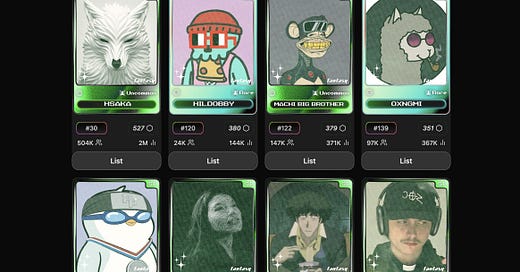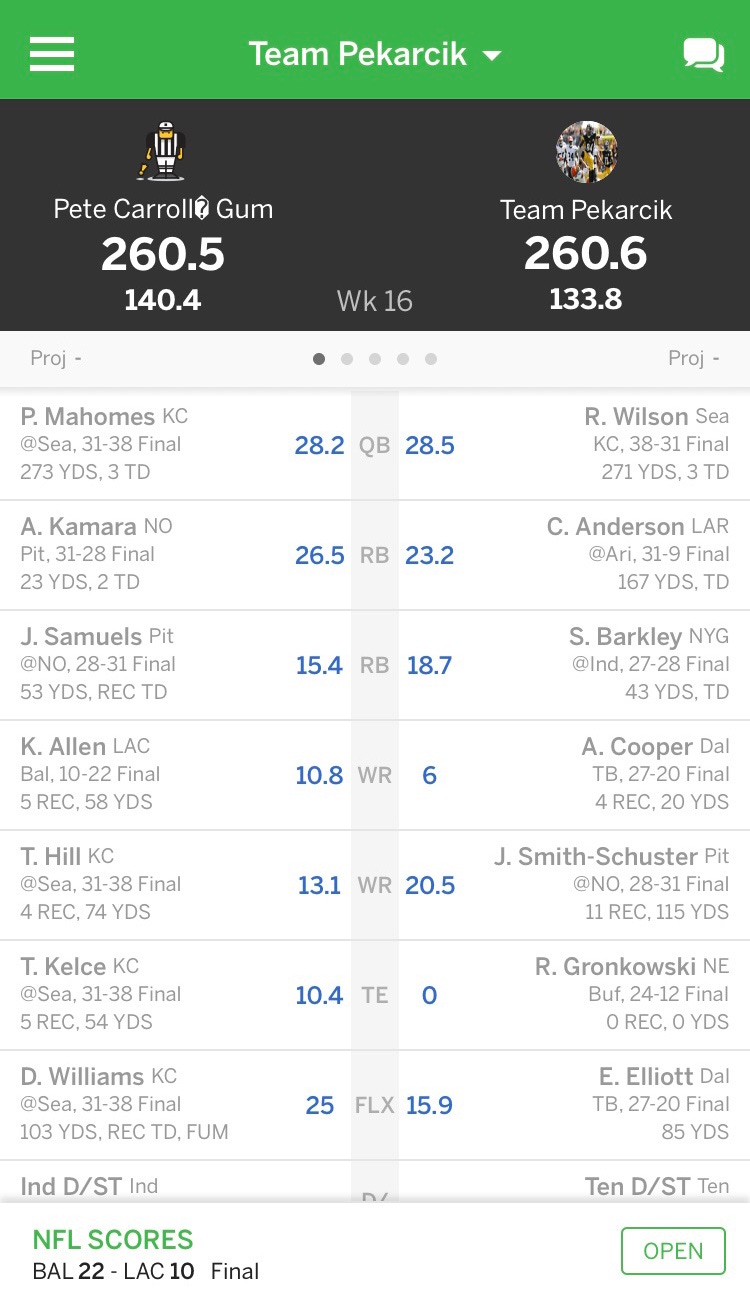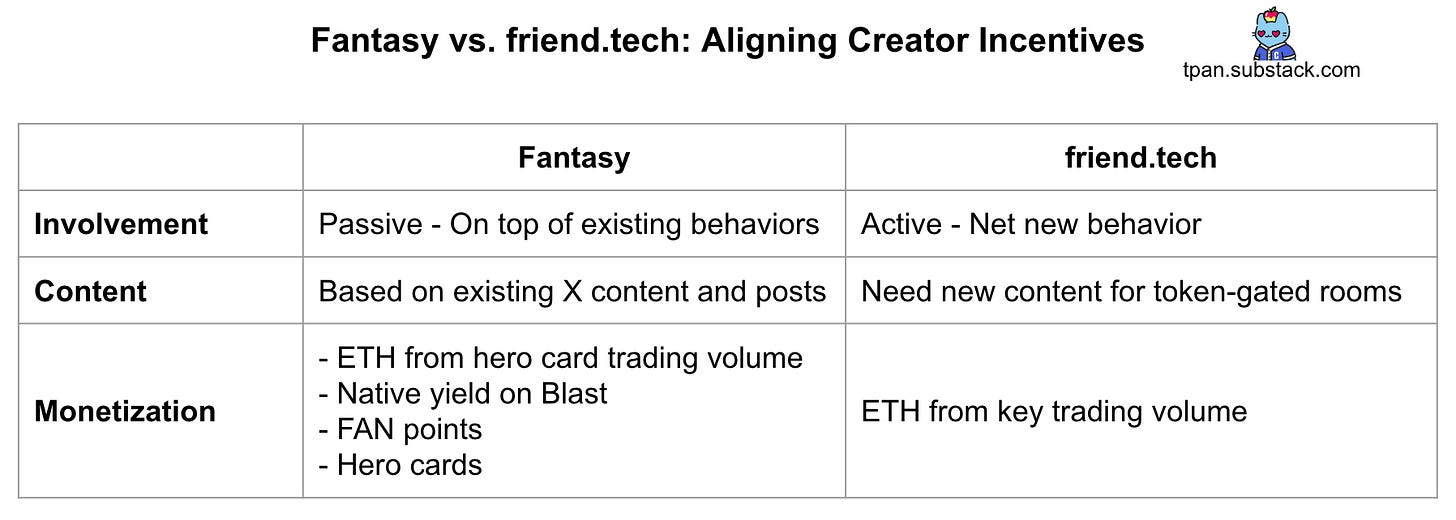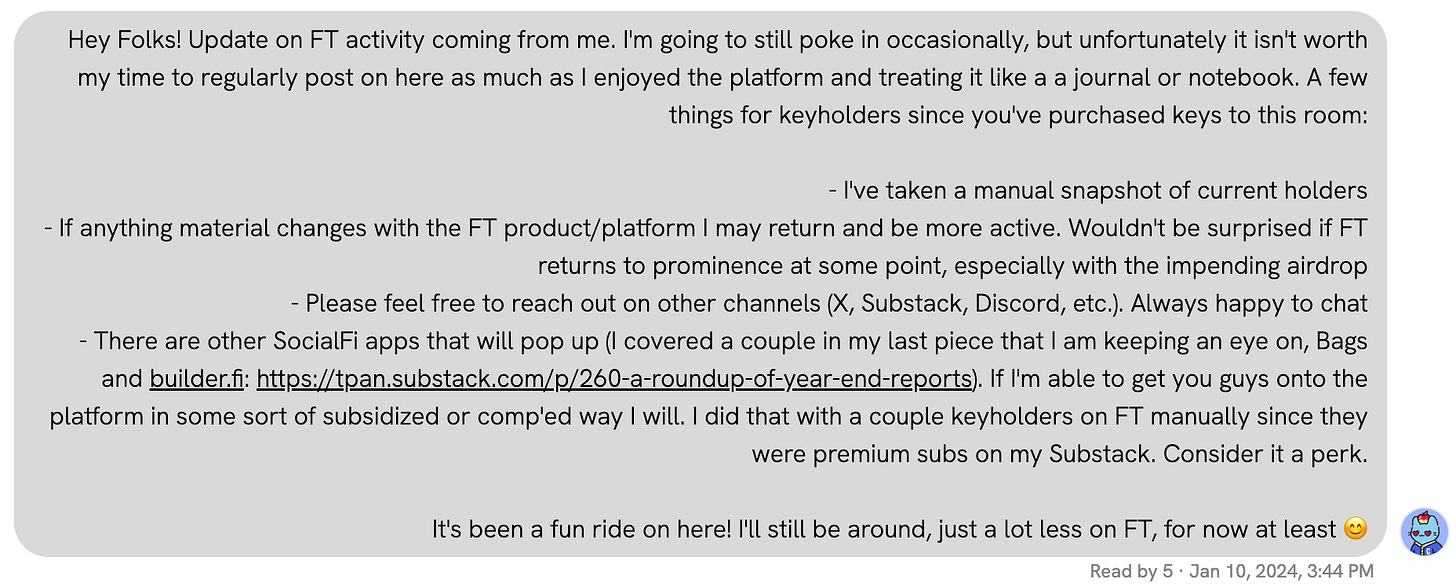Since I covered friend.tech 6 months ago (time flies!), I’ve been patiently waiting for something in SocialFi that gets me as excited as those days.
It seems like that day has arrived with a new category putting a new spin on an established ‘fantasy’ model commonly seen in sports.
Fantasy
I came across Fantasy last week when the platform launched on the Blast Testnet. Check out their announcement video, it’s hilarious:
As I went through the onboarding funnel, I instantly understood what the point of Fantasy was once I saw this:
Fantasy is essentially fantasy sports x Twitter influencers, starting with Crypto Twitter.
How does it work?
Create your fantasy roster by collecting influencer cards and set your lineup for weekly tournaments
There is a marketplace to buy and sell influencer cards to improve your lineup
Participants earn rewards such as BLAST, ETH, FAN points, and influencer packs
That’s basically it. It’s especially easy to understand for anyone who plays fantasy sports (player stats, creating the optimal lineup, waiver wire, etc.).
The SocialFi aspect of Fantasy with the marketplace and tournament rewards are clear incentives for players. What about the influencers? Or as Fantasy calls them, the Heroes:
Passively earn 1.5% of their card volume in ETH. This is on top of the 4% native yield earned on the Blast L2
Receive additional FAN points which unlock additional perks and claims
Regularly mint your card for free which can be given away to your community or supporters
Imagine if professional athletes received bonuses based on their performance and how often they were put into starting lineups. Unrealistic for professional athletes, but not as far-fetched for influencers on novel platforms like Fantasy.
What do the Heroes think about Fantasy? At least some of them find it entertaining.
What else is interesting about Fantasy?
Fantasy is as much TCG as it is fantasy sports
Although I’ve compared Fantasy to fantasy sports, there is a strong Trading Card Game (TCG) aspect to the product, and that’s how the team describes themselves.
Fantasy is a SocialFi Trading Card Game (TCG) where players can use trading cards of crypto Twitter influencers to play in an online game, allowing them to monetize their social capital and research expertise.
Hero cards have different rarities (Uncommon, Rare, Epic, Legendary) and Seasons (all cards are currently S1). Rarity impacts the number of Hero cards in circulation, while Seasons are unclear (possibly a point bonus in the future to incentivize more trading volume?).
Hero score
Each Hero has a Hero score, which determines your lineup’s performance during tournaments. This is a composite score consisting of the following factors (and possibly more):
The views ranking of the Hero (versus others)
The reach ranking of the Hero (versus others)
The total number of views of the Hero
Naturally, this makes your lineup decisions more nuanced than ‘I’ll just choose the influencer with the most followers’. Serious players will research these metrics to create an optimal lineup to increase their chances of winning.
If Fantasy gets popular enough or if the prizes are lucrative enough, it’ll be interesting to observe if players use subtle tactics (or brute force via bot farms) to juice their Hero stats, and how Fantasy addresses them.
As an extreme example of this, what if a player hacks an influencer’s account to post something ridiculous but viral, causing their Hero score to jump to the top?
Optimizing lineups
The user behavior of optimizing a lineup is familiar, but the optimization itself operates differently.
There are no set match dates, influencers post whenever they feel like it. If they don’t post when a Fantasy tournament is live, they are effectively ‘injured’.
On the other hand, some influencers are ‘injured’ (no posts) for weeks and suddenly become active again, like Hsaka. Unlike sports, there are no injury reports. Sometimes the influencer just feels like posting again or a certain catalyst occurs.
Another edge case — What if you ‘bribed’ an influencer to post, or post something that had a higher chance of going viral? 🤔 Very different hypothetical, and this might not break the rules. Or at least it’d be harder to detect.
Creator incentive alignment
This is where a platform like Fantasy could have more staying power and where friend.tech struggled over time with retention.
The magic in something like Fantasy (and Fantasy sports in general) is that the influencers/players don’t have to do anything extra. Compare that with friend.tech, where creators have to log into a different platform and create exclusive content for their key holders regularly or face a selloff.
As interesting as friend.tech was as a new SocialFi primitive for someone like myself, I eventually became inactive after 5 months of regular posting. The juice simply wasn’t worth the squeeze.
As Fantasy inevitably grows in popularity, it’ll be interesting to observe how the platform encourages their users to keep coming back to play while keeping the scoring methodology neutral.
Despite these challenges, why do I believe Fantasy will ‘inevitably grow’? They are one of the 47 winners of the Big Bang competition and will receive marketing support and will be receiving a substantial airdrop allocation.
On top of that, 4,491 new players (connected X accounts + new wallets) joined the Testnet version of Fantasy from last Friday to yesterday.
Invites are currently closed, so keep your eyes peeled when they open back up if you want to check it out.
Perl
Fantasy isn’t the only product exploring this genre of SocialFi. Perl is a SocialFi platform built on top of Farcaster, allowing players to bet on users and their social engagement. Perl’s mechanics are even simpler than Fantasy’s.
Perl is a free-to-play skill-based prediction game
There are two game modes: MORE/LESS and VERSUS (eg: will X or Y have more likes?)
$PERL is the in-game currency used to make wagers
Perl may eventually offer a decentralized, on-chain version of the token in the future (aka there may be an airdrop 😉)
The Farcaster Frames feature allows picks to be made directly on Farcaster clients, making it easy to acquire new users or keep existing users engaged.
Perl reminds me of PrizePicks, a daily fantasy app that has simple MORE/LESS mechanics as well.
Where does SocialFi go from here?
No clue. (I lowkey love how I ask myself these big-brain questions and then let you guys down with a dumb answer lol, sorry.)
However, the right combination of incentives, easy-to-understand mechanics, and unique features like Farcaster Frames give this genre of SocialFi fresh legs that it didn’t quite have before. These platforms are built on top of the social platform instead of creating a new social network itself. This is similar to fantasy sports in the sense that it’s based on the sport, not a sport in of itself (although some people treat it as seriously as a sport lol).
And don’t take it from just me — VC’s are eyeing this space as well. At a minimum, it’s a great thought exercise that challenges the traditional notions of what ‘fantasy sports for X’ could look like.
As for friend.tech, they’re down but not out. They have an airdrop coming soon and have been quietly building v2.
See you Thursday!

















You should definitely check out Infomon! It's a SocialFi monster collecting game on Twitter. I loved their first free-to-play season, and are very looking forward to their season 2 PVP gameplay on Twitter.
Bullish on Tpan covering socialFi & Blast stuff I have no time to search for myself :D